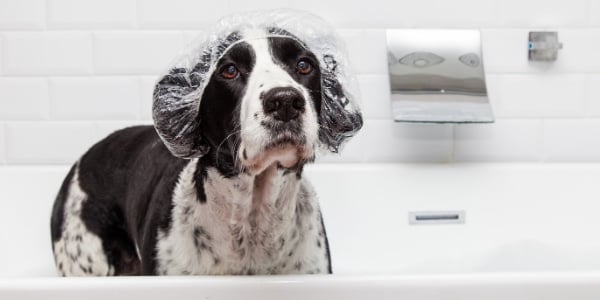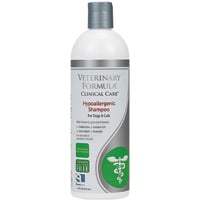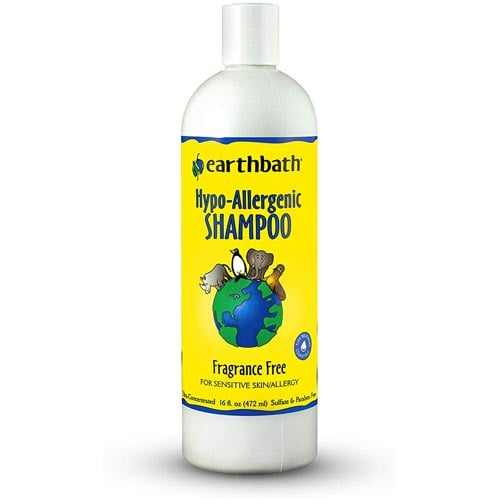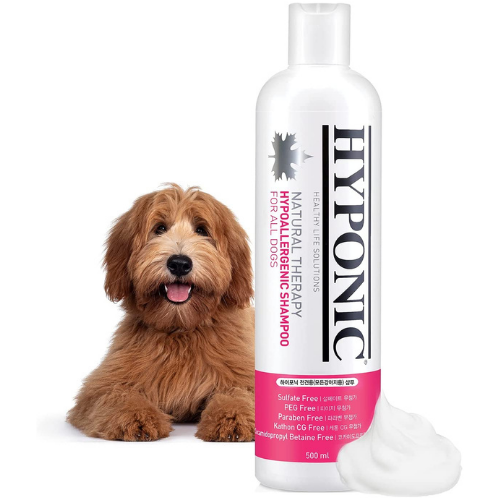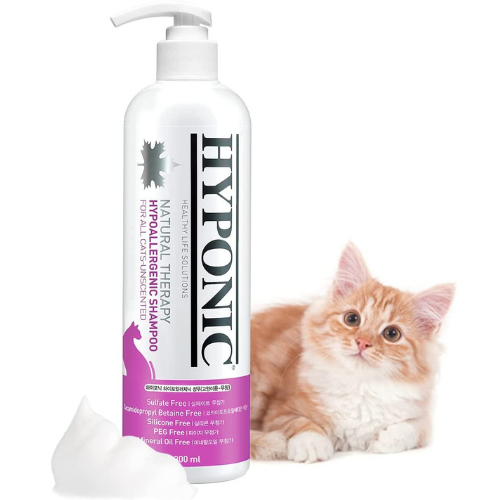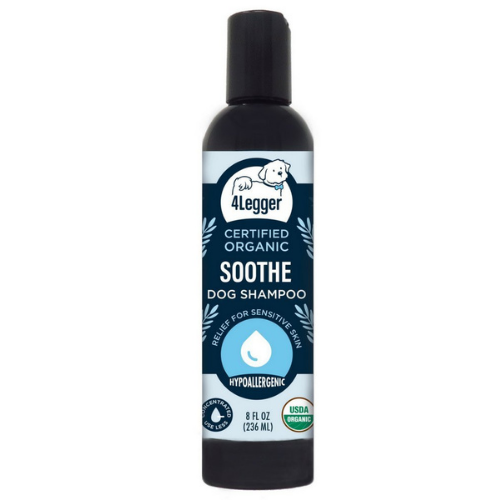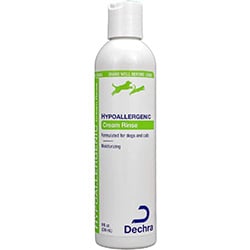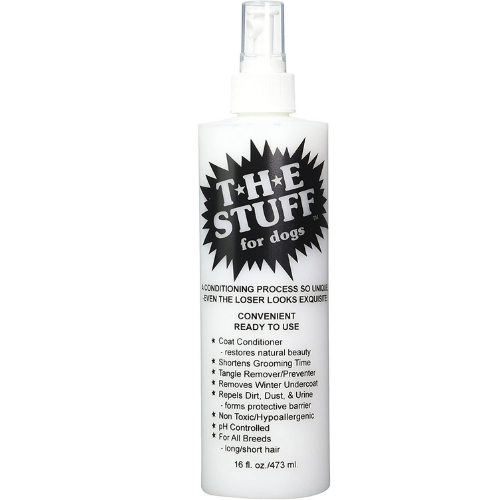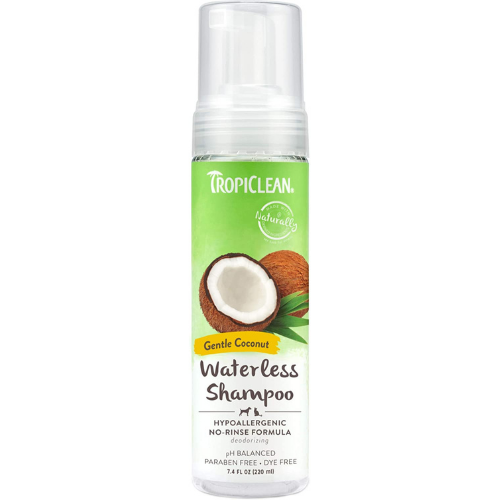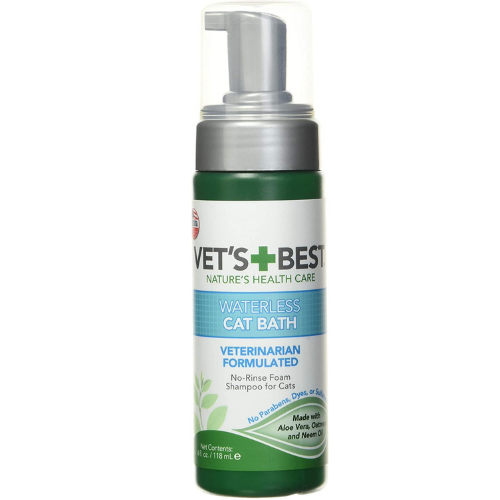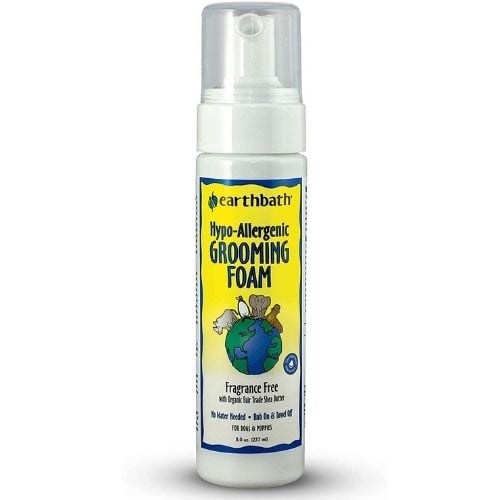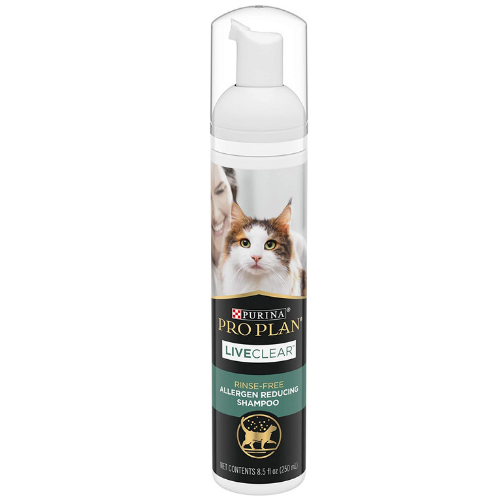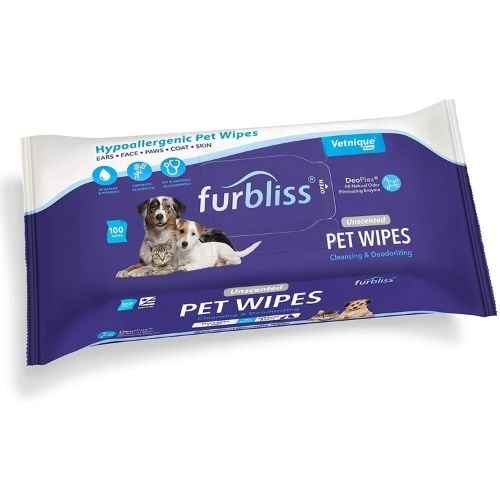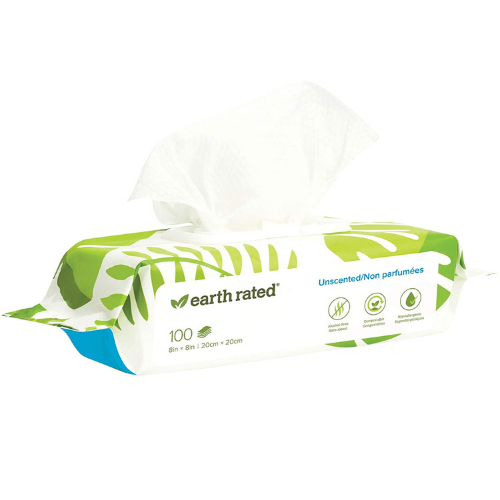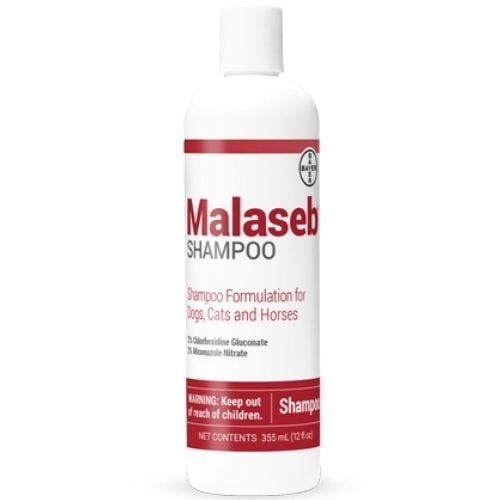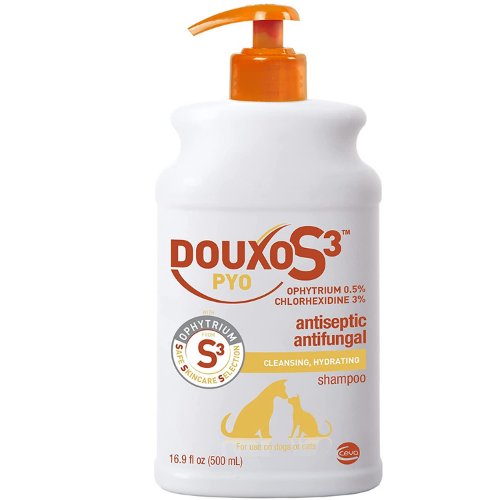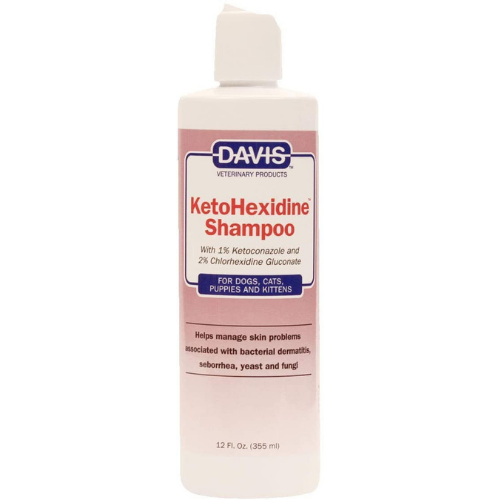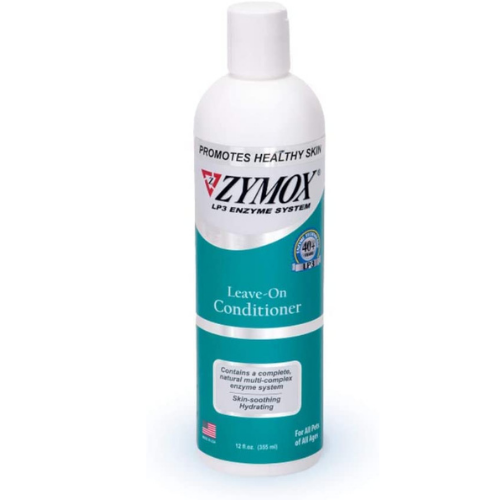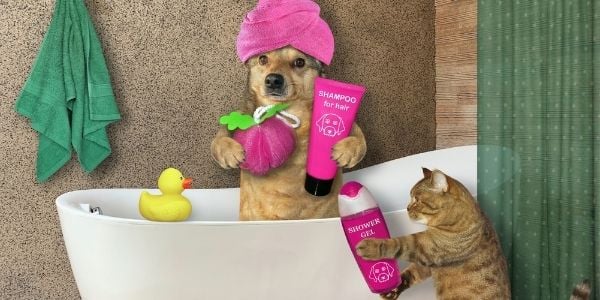
Scrubb a dub dub! It’s time to hop in the tub!
Some pets love a bath, and others, well, it is like bathing a screaming toddler — messy and stressful.
The best thing to do, whether you have a bath lover or hater, is to have everything ready to go before you start. This helps move the whole process along efficiently, decreases stress, and prevents you from using the wrong products.
When it comes to bathing your pets, it can be tempting to reach for whatever shampoo you might already have in your shower or grab the dishwashing soap from your kitchen. While this may be ok every now and again or in an emergency (skunk attack!), the regular use of human shampoos (even the “tear-free” ones for babies) and dishwashing soaps can actually lead to worse skin problems for your pets.
Dogs and cats, unfortunately, are not designed for the human environment. The dramatic fluctuations in temperature and humidity caused by our heating and cooling systems can wreak havoc on their skin since their physiology isn’t designed to deal with it. Add over bathing to this scenario, especially with the wrong shampoos, and your pet’s skin may suffer.
Skip to:
The Problem with Human Shampoos for Dogs and Cats
The skin is the largest organ of the body. Its purpose is to protect our pets from infections, parasites, and environmental elements and stressors.
The skin is also responsible for maintaining the body’s internal environment by preventing moisture loss and absorbing water. It is regularly exposed to outside elements, which makes it susceptible to disease and harm. Keeping it healthy with proper care and diet is essential for our pets.
Surprisingly, human and animal skin isn't the same. Our pets' skin has very different pH levels from ours.
The pH level of most dogs’ and cats’ skin has a range of about 6.2 to 7.2 (some breeds are as low as 5.5 and others as high as 9.1), and human skin is 5.2 to 6.2.
Another way our pet’s skin differs from our own is in the number of skin cell layers. Humans have 10–15 layers as compared to pets only having 3–5 layers. This difference makes our pets’ skin more sensitive than our own.
Lastly, human skin is generally oilier than animal skin. Animals need less oil than humans since they have fur to protect their skin.
Reasons human shampoos should be avoided for pets
- The pH is more acidic, which can be irritating to a healthy pets’ skin which tends toward a more neutral pH. Additionally, with continued use, it can alter your pet’s skin pH balance making their skin prone to drying and flaking.
- They often contain artificial scents, fragrances, and colors that can be harsh and cause allergic reactions.
- They often contain irritating ingredients that can strip away the pet’s protective oils from their skin and coat.
- Many contain sulfate sodium salts which causes too much cleaning power and can be irritating and drying. Additionally, there have been cases where this substance had caused significant trauma when it came into contact with the eyes.
- They can be very irritating to pets' eyes and cause corneal irritation.
There is a disruption of the sensitive and delicate skin barrier when our pets are exposed, especially repeatedly, to these ingredients. When this occurs, our pets are at risk of developing dry and itchy skin, which may result in bacterial, fungal, or yeast infections of the skin. Additionally, when the thin oily layer is removed, there is more and faster sebum (oily, waxy substance) growth, as well as smells.
The Problem with Dishwashing Soaps
Ironically, it’s the very thing that makes Dawn® and other dishwashing soaps so effective at treating wildlife affected by oil spills and at de-stinking pets when they’ve been “skunked” — their excellent grease and oil removing ability. That is what makes dish soaps inappropriate for regular bathing for dogs and cats.
When used for routine bathing of your pets, dishwashing soaps will quickly strip your pet’s skin of the natural oils that help to nourish and protect it. This leaves the skin less hydrated and decreases its ability to keep bacterial, yeast, and allergic irritants at bay.
What Shampoo Should You Use for Your Pet?
When buying shampoo for your pets, it is worth spending the extra money and time to purchase one that is designed for pets and their specific needs.
When researching shampoos — some things to keep in mind
- Is the shampoo specifically formulated for pets?
- Is it hypoallergenic?
- Is the shampoo used for regular bathing soap-free? This is important so that it will not strip oils from the coat and dry out the skin? See below for some soap-free suggestions.
- Does it have a non-irritating ingredient list? Make sure it doesn't have any of the following: fragrances, dyes, formaldehyde, alcohol, mineral oil, phthalates, parabens, sodium lauryl, and polysorbates.
- Does it thoroughly cleanse? Medicated shampoos are not meant for cleansing, however, routine shampoos are. So, if you're using a medicated shampoo, you'll also need a regular shampoo to clean your pet first.
- Can it eliminate odors? Most labels will state if it eliminates odors, but sometimes it's trial and error.
- Does it match my pet’s coat type (long and silky, short or double-coated)?
The TropiClean Perfect Fur Shampoo line is great for various dog coat types, and can be used on puppies as young as 12 weeks:
Combination Coat (with odor and shedding control): Border Collies, Golden Retrievers, Spaniels, etc.
Curly & Wavy: Bichons, Doodles, Poodles, Portuguese Water Dogs, etc.
Double-Coat (thick): Australian and German Shepherds, Corgis, Pomeranians, etc.
Double-Coat (short): Beagles, Labs, Pugs, Rottweilers, etc.
Long-Haired: Lhasa Apsos, Terriers, Shih Tzus, Yorkies, etc.
Smooth Coat: Boxers, Bulldogs, Greyhounds, Pit Bulls, Pointers, etc. - Does it match my pet’s skin issues (healthy and normal, atopic, bacterial infection, yeast infection)?
- What shampoos are recommended by my veterinarian? They know your pet and their health, as well as their skin type – their recommendations, will be appropriate for your pet.
Recommended Pet Shampoos
For weekly bathing of pets with healthy skin and coats, here are a few shampoo recommendations. These are all SOAP-FREE, hypoallergenic, and are therefore mild. For pets with any type of allergies or sensitivities, it is best not to use shampoos with artificial scents, especially those with sensitive skin. See above, for shampoo recommendations for a dog's coat type.
Do Pets Need Conditioner?
Not every pet needs conditioner, but if your pet has dry or flaky skin, it can help.
During the winter months, when home heating is on, this can dry out your pet's skin, so using a conditioner during this time of year is a good idea. Here are a few of our favorite conditioners.
In drier climates, some pets can have issues with dry skin, so a conditioner can help relieve dryness and itching.
The Dechra conditioner is a rinse-out conditioner. Sort of like a hair mask for us. It must be applied thoroughly to the fur and left on for 5 to 10 minutes. After the contact time, it is rinsed off completely.
The Stuff is a leave-in conditioner spray. You gently massage in and done! It is one of my ultimate favorites. It works amazingly.
For really dry coats, you can actually do both a rinse-out and leave-in conditioner.
Waterless Shampoos
Waterless shampoos are a great option for:
- Spot cleaning, when you don't want to give your pet a full bath – good for dirty paws after a walk
- For traveling where giving a bath may not be practical
- Aging cats that are having a hard time grooming themselves
- Pets that don't like water
- Pets, especially dogs, that are too big or too immobile to get into the tub
- Pets with gastrointestinal issues
- Pets who are in the process of being potty trained and have accidents
- Cleaning up after an accidental expression of anal glands
There is no need for water or rinsing when using these waterless shampoos and foams.
Grooming Wipes
For quick clean-ups, these wipes can come in quite handy. And these two options are hypoallergenic and fragrance-free, too.
Medicated Pet Shampoos
For a variety of skin issues, such as bacterial infections, yeast infections, and/or allergies, medicated shampoos are often prescribed by veterinarians. These special prescription shampoos are formulated to treat specific skin issues.
Unlike routine bathing, there are some “rules” for using medicated shampoos so that your pet gets the full benefits.
How to use medicated shampoos
- Medicated shampoos need to be applied to a clean wet coat. Using lukewarm water, completely wet your pet’s coat after you have brushed them out. If your pet is visibly dirty, pre-wash with Dechra DermaLyte hypo-allergenic shampoo or another gentle shampoo to remove the excess dirt.
- Once clean, begin to gently work the medicated shampoo into the wet coat. Start with the areas that are most severely affected and then move to the rest of the body.
- Once the shampoo is applied over the entire body and gently worked into the coat, set a timer for 10 to 15 minutes (consult with your veterinarian for the length of time appropriate for your pet). Being sure that there is adequate contact time on the skin is very important so that the medications in the shampoo can work.
- Following the recommended contact time, completely rinse your pet’s coat with lukewarm water. Then gently towel dry their coat – do not rub. We love the Soggy Doggy and Tuff Pupper shammy towels because they do a great job of removing excess water on the skin and fur.
NOTE: Most pets do not like hair dryers. If you use a dryer, only use it on a cool setting so as not to risk burning your pet’s skin. This is a dryer we recommend, specifically made for use on dogs, but it is pricey. - Make sure to use an appropriate ear cleaner with a drying agent, so that your pet doesn't get an ear infection as well.
- If your veterinarian prescribed a leave-in conditioner, you would apply it after lightly drying.
How often do you use medicated shampoos?
Typically, medicated baths are done once to twice weekly but can be as often as three times per week for severe skin infections. Your veterinarian will guide you on the frequency of bathing.
Some commonly recommended medicated shampoos
Some people love oatmeal-based shampoos. However, it has been my own experience with my patients that used them; they continued to have itchy skin issues. Below are some of my favorite choices.
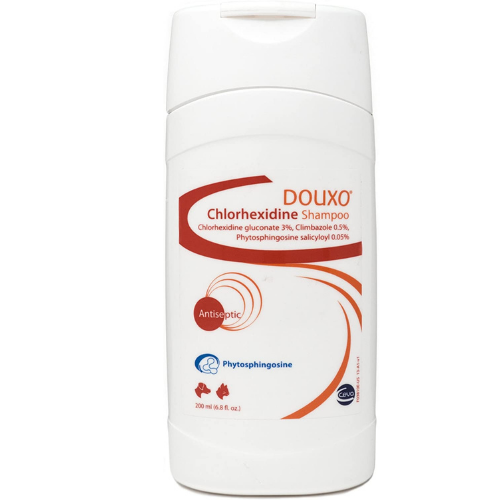
How Often Should You Bathe Your Pet?
The answer to this question is, it depends! The general rule of thumb has always been no more than once a month for pets with healthy coats and skin. But with better shampoo formulations designed for pets and the need for medicated shampoos at times, bathing may be needed once to twice weekly.
Bathing frequency for dogs
Different breeds of dogs or breed mixes have different bathing needs.
Here is a general guideline:
- Short coats (dachshund, pointers, etc.) can go quite a long time between baths since their coats tend to shed excess dirt and oil. Additionally, they seldom seem to smell!
- Oily breeds (basset hounds, cockers) may need weekly baths to control their odor and greasy coats.
- Water-resistant (retrievers) and double coats (Akita, chow chow, etc.) should be brushed clean instead of frequent bathing so that their coats can maintain their natural oils. Brushing helps spread the oils and maintain healthy skin.
Bathing frequency for cats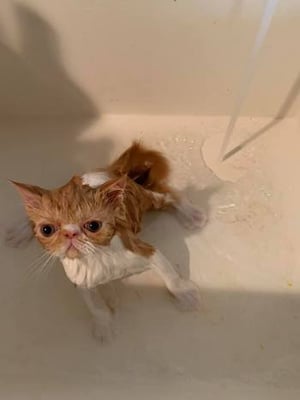
Cats typically bathe themselves with all their grooming. However, as they age grooming can become more difficult, or your cat may get into something where they need a bath right away. Getting your cat used to baths, even though they don't need them often is a good thing to do.
Hairless cats need to be bathed more often because they do not have fur to absorb the oils produced by their skin. If they are not bathed regularly, the oils will accumulate and they risk developing acne and blackheads.
Bathing them weekly with hypoallergenic shampoos, free of dyes and perfumes, can help prevent these issues. It is important to only use warm water, rinse them thoroughly and towel dry completely. In addition to regularly bathing your hairless cat, you will want to perform routine ear cleaning with a product that eliminates the build-up of wax and debris, as well. The lack of fur allows more dirt to enter their ears which can predispose them to ear infections.
Always remember to consult with your veterinarian when in doubt about how to bathe your pet and what to use. Happy bathing!



